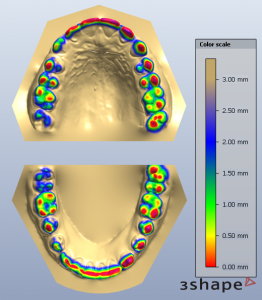Ce type de document à exactement le même but que le moulage d’étude en plâtre dur mais l’examen est ici beaucoup plus facilité grâce aux différents outils informatiques mis à leur disposition. Voici quelques exemples :

Calcul du périmètre d’arcade permettant de connaître l’espace disponible pour réaligner les dents.

Calcul de la somme des largeurs de chaque dent afin de déterminer si le périmètre d’arcade est suffisant.

Simulation d’une avancée mandibulaire pour la correction d’une mandibule trop en arrière.
